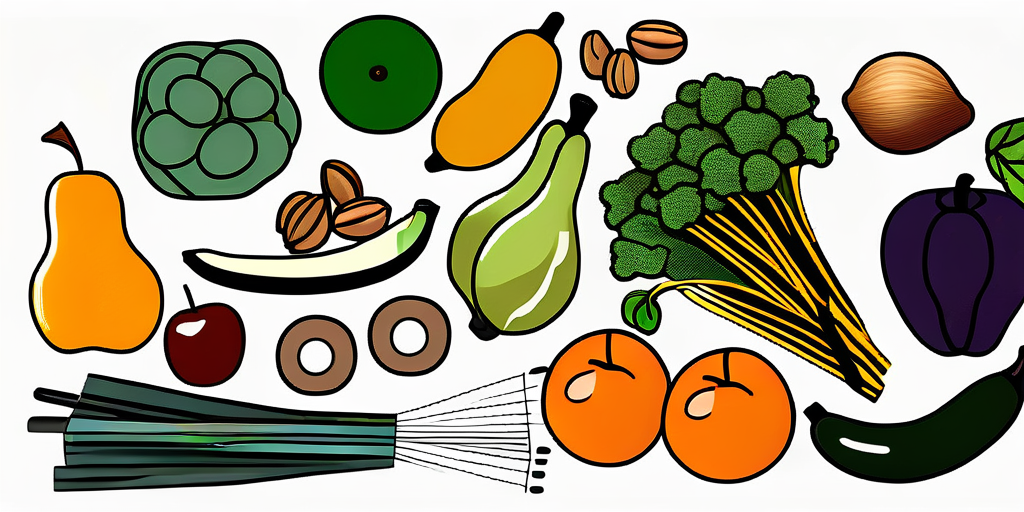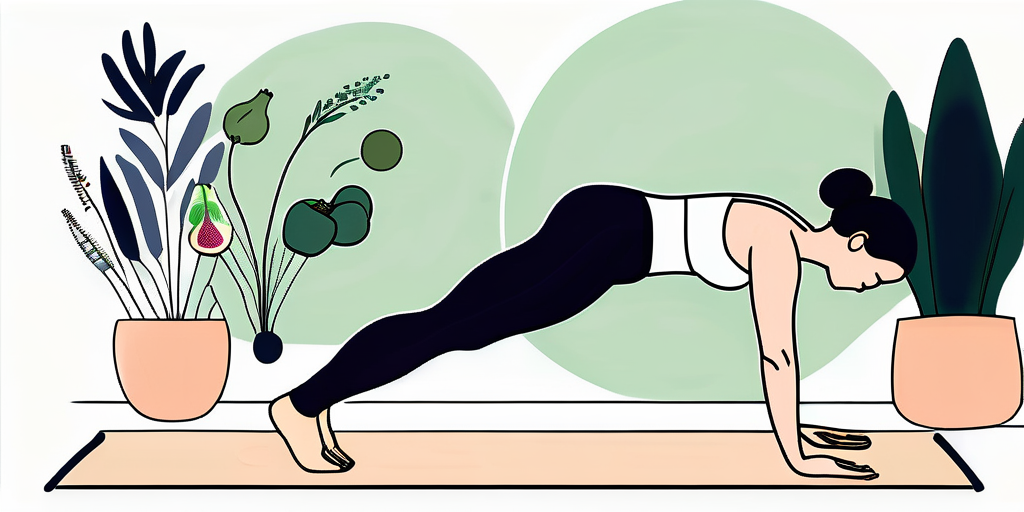Pilates, a popular form of exercise, is known for its benefits in improving strength, flexibility, and overall physical fitness. However, many people may not be aware of the impact that Pilates can have on eating habits and nutrition. In this article, we will explore the various ways in which Pilates can influence our food choices, metabolism, digestive health, and overall well-being.
Understanding the Connection Between Pilates and Nutrition
Pilates goes beyond just the physical aspect of exercise. It encourages a holistic approach to health and wellness, which includes paying attention to what we put into our bodies. The mind-body connection that is emphasized in Pilates can have a profound effect on our eating habits and nutritional choices.

When we think about exercise, we often focus solely on the physical benefits such as increased strength and flexibility. However, Pilates takes it a step further by incorporating principles that promote overall well-being, including nutrition. By understanding the connection between Pilates and nutrition, we can enhance our practice and achieve optimal health.
The Role of Pilates in Boosting Metabolism
Pilates involves controlled movements and deep breathing, which can help increase circulation and stimulate the metabolism. This means that when we engage in Pilates regularly, we not only strengthen our muscles, but also improve our metabolic rate. A higher metabolic rate makes it easier for our bodies to process and utilize nutrients from the food we consume.
Furthermore, Pilates helps to build lean muscle mass, which is more metabolically active than fat. This means that even at rest, our bodies will burn more calories. By incorporating Pilates into our fitness routine, we can effectively boost our metabolism and support our body's natural ability to process nutrients efficiently.
How Pilates Influences Dietary Choices
One of the core principles of Pilates is body awareness. Through the practice of Pilates, individuals become more in tune with their bodies and better able to recognize hunger and fullness cues. This increased awareness can lead to more mindful eating and better food choices.
When we are more connected to our bodies, we can distinguish between true hunger and emotional or mindless eating. Pilates cultivates a sense of mindfulness that extends beyond the mat, allowing us to make conscious decisions about the foods we consume. By listening to our bodies and honoring its needs, we can nourish ourselves with nutrient-dense foods that support our overall well-being.
Additionally, Pilates can help improve posture and alignment, which can in turn affect our digestion. When our bodies are properly aligned, it allows for optimal functioning of the digestive system, leading to improved absorption of nutrients and elimination of waste.
Poor posture can contribute to digestive issues such as bloating, constipation, and acid reflux. By practicing Pilates and focusing on proper alignment, we can alleviate these discomforts and promote a healthy digestive system. This, in turn, enhances our body's ability to extract essential nutrients from the foods we eat, ensuring that we receive the maximum benefit from our diet.
In conclusion, the connection between Pilates and nutrition is undeniable. By incorporating Pilates into our fitness routine, we not only strengthen our bodies but also cultivate a deeper understanding of our nutritional needs. The mindful approach that Pilates promotes allows us to make conscious choices about the foods we consume, leading to improved digestion, enhanced metabolism, and overall well-being.
The Physiological Effects of Pilates on the Body
Aside from its impact on metabolism and digestion, Pilates also offers a range of other physiological benefits that can positively influence our eating and nutrition habits.
When it comes to digestive health, regular practice of Pilates can contribute to better overall well-being. The various movements and stretches involved in Pilates can help promote healthy digestion by stimulating the muscles in the abdomen and encouraging efficient bowel movements. By engaging in Pilates, you are not only improving your core strength but also supporting your digestive system.
But that's not all. Pilates has a significant impact on energy levels as well. Feeling sluggish and low on energy can often lead to poor food choices. However, engaging in Pilates can revitalize the body and increase energy levels. The combination of focused breathing and movement can invigorate both the mind and body, providing a natural boost of energy and reducing cravings for unhealthy snacks.
Furthermore, Pilates helps improve circulation throughout the body. As you move through the various exercises and stretches, blood flow increases, delivering oxygen and nutrients to all parts of the body. This improved circulation not only enhances overall health but also aids in the efficient functioning of the digestive system.
Additionally, Pilates helps to strengthen the pelvic floor muscles. These muscles play a crucial role in supporting the organs in the abdominal and pelvic regions. By strengthening these muscles through Pilates, you can improve bladder control and prevent issues such as incontinence. This, in turn, can positively impact your eating habits, as you won't have to worry about discomfort or interruptions during meals.
Moreover, Pilates is known to reduce stress levels. Stress can often lead to emotional eating or making poor food choices. By incorporating Pilates into your routine, you can effectively manage stress and reduce its negative impact on your eating habits. The mindful and controlled movements of Pilates help calm the mind, release tension, and promote a sense of well-being.
In conclusion, Pilates offers numerous physiological benefits that extend beyond its impact on metabolism and digestion. From improving digestive health to increasing energy levels, enhancing circulation, strengthening pelvic floor muscles, and reducing stress, Pilates provides a holistic approach to improving overall well-being and positively influencing our eating and nutrition habits.
The Psychological Aspects of Pilates and Eating Habits
While Pilates primarily focuses on physical fitness, it also has profound effects on our mental well-being and psychological relationship with food.

Engaging in regular Pilates practice not only strengthens our bodies but also nurtures our minds. The mind-body connection that Pilates cultivates allows us to develop a deeper understanding of ourselves, both physically and mentally. Through this practice, we can explore the intricate relationship between our thoughts, emotions, and behaviors, including our eating habits.
The Influence of Pilates on Mindful Eating
Mindfulness is a key component of Pilates. By fostering present-moment awareness, Pilates can help individuals develop a more mindful approach to eating. When we are fully present and engaged while enjoying a meal, we can experience a greater sense of satisfaction and fulfillment.
Imagine sitting down to a meal and savoring each bite, fully appreciating the flavors and textures of the food. By practicing mindfulness, we can become more attuned to our body's hunger and fullness cues, leading to better portion control and a more balanced relationship with food.
Furthermore, Pilates teaches us to be non-judgmental and compassionate towards ourselves. This mindset extends to our eating habits, allowing us to let go of guilt or shame associated with food choices. Instead, we can approach eating with kindness and self-acceptance, making room for a healthier and more positive relationship with food.
Pilates and the Perception of Food
Regular practice of Pilates can also change the way we perceive food. As we become more in tune with our bodies, we may start to view food as fuel for exercise and overall health, rather than as mere indulgence. This shift in mindset can result in making healthier food choices and prioritizing nutrient-dense options.
When we engage in Pilates, we learn to appreciate the incredible capabilities of our bodies. We recognize the importance of nourishing ourselves with wholesome foods that provide the necessary nutrients to support our physical activities and overall well-being.
Moreover, Pilates encourages us to listen to our bodies and honor its unique needs. By developing a heightened awareness of how different foods make us feel, we can make informed choices that support our individual health goals. This newfound understanding empowers us to make conscious decisions about our diet, ensuring that we fuel our bodies optimally.
In conclusion, Pilates not only strengthens our physical bodies but also enhances our mental and emotional well-being. Through its emphasis on mindfulness and the mind-body connection, Pilates can positively influence our eating habits and perception of food. By practicing Pilates regularly, we can cultivate a more mindful approach to eating, leading to a healthier and more fulfilling relationship with food.
Incorporating Pilates into a Healthy Lifestyle
To fully reap the benefits of Pilates on eating and nutrition, it is essential to integrate it into a balanced and healthy lifestyle.
Pilates is not just a form of exercise; it is a way of life. By incorporating Pilates into your daily routine, you can transform your body and mind. But Pilates is just one piece of the puzzle when it comes to overall health and nutrition. It is important to combine regular Pilates practice with a well-balanced diet that includes a variety of whole foods such as fruits, vegetables, lean proteins, and whole grains.
When it comes to nutrition, Pilates enthusiasts understand the importance of fueling their bodies properly. By nourishing ourselves with wholesome and nutritious foods, we can enhance the benefits of Pilates and optimize our overall well-being. Imagine starting your day with a delicious and nutritious breakfast, packed with vitamins and minerals to fuel your Pilates session. Or enjoying a post-workout snack that replenishes your energy stores and aids in muscle recovery.
Balancing Pilates with a Nutritious Diet
Integrating Pilates into a healthy lifestyle means finding the perfect balance between exercise and nutrition. It's not just about what you do on the mat; it's about what you put into your body. By following a well-rounded and nutritious diet, you can support your Pilates practice and achieve optimal results.
So, what does a balanced Pilates diet look like? It starts with incorporating a variety of whole foods into your meals. Fruits and vegetables provide essential vitamins and minerals, while lean proteins like chicken, fish, and tofu help repair and build muscles. Whole grains such as quinoa and brown rice provide sustained energy, and healthy fats like avocado and nuts nourish your body from the inside out.
By focusing on whole foods and avoiding processed and sugary snacks, you can fuel your body with the nutrients it needs to perform at its best during Pilates sessions. Remember, Pilates is not just about toning your muscles; it's about nourishing your body and mind.
The Role of Hydration in Pilates and Nutrition
Staying hydrated is crucial for maximizing the effects of Pilates on the body and supporting proper nutrient absorption. Water is the elixir of life, and incorporating an adequate intake throughout the day is essential, especially before and after Pilates sessions.
Hydration plays a vital role in our overall health and well-being. When we are properly hydrated, our bodies can function optimally, and our muscles can perform at their best. During Pilates, staying hydrated helps prevent muscle cramps and promotes optimal performance. It also aids in the elimination of toxins from the body, allowing for better recovery and muscle repair.
But hydration is not just about drinking water; it's about nourishing our bodies with fluids that replenish electrolytes and minerals lost during exercise. Consider adding a splash of lemon or cucumber to your water for added flavor and detoxifying benefits. Or try hydrating with coconut water, which is rich in potassium and helps restore electrolyte balance.
Remember, Pilates is not just a physical practice; it is a holistic approach to health and well-being. By incorporating Pilates into a healthy lifestyle, balancing it with a nutritious diet, and staying properly hydrated, you can unlock the full potential of this transformative exercise method.
The Long-Term Benefits of Combining Pilates with Good Nutrition
By merging the practices of Pilates and maintaining a healthy diet, both short-term and long-term benefits can be achieved.

Pilates and Nutrition for Weight Management
Regular Pilates practice can contribute to weight management goals by increasing overall muscle mass and promoting lean body composition. Combined with a nutritious diet, Pilates can help individuals achieve and maintain a healthy weight over time.
Pilates and Nutrition for Overall Well-being
When Pilates is combined with proper nutrition, individuals can experience improved physical and mental well-being. The harmonious blend of exercise and good nutrition can enhance strength, flexibility, energy levels, digestion, and overall vitality.
In conclusion, the impact of Pilates on eating and nutrition extends far beyond the physical benefits. From boosting metabolism and influencing dietary choices to promoting digestive health and mindfulness, Pilates offers a holistic approach to wellness. By incorporating Pilates into a healthy lifestyle and making mindful nutrition choices, individuals can unlock the long-term benefits of improved physical and mental well-being. So, why not give Pilates a try and discover its transformative power on your eating habits and nutrition?




